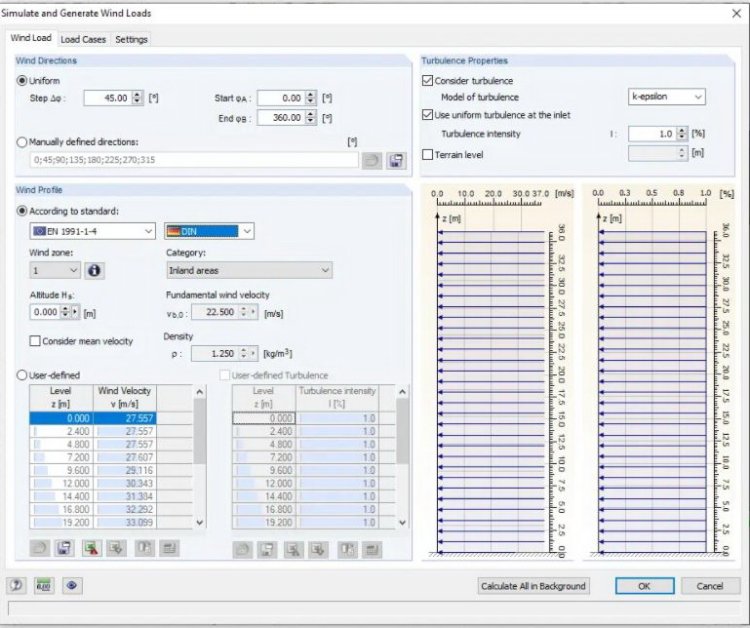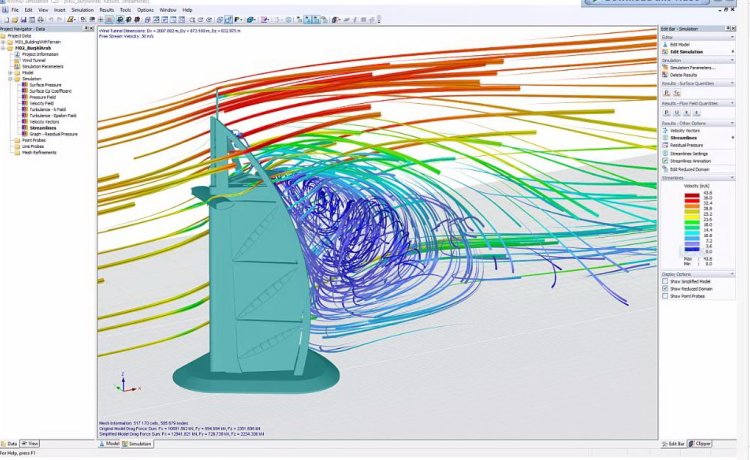
กรุณาสอบถามข้อมูลเพิ่มเติมได้ที่
| ชุตินันท์ (นัทตี้) | |
| nuttytwoplus | |
| 0863220766 | |
| 02 5137494 | |
| chutinun@twoplussoft.com | |
| www.facebook.com/chutinuntwoplus |
***กรุณาระบุชื่อ software ที่ต้องการติดต่อด้วยครับ
RWIND Simulation เป็นโปรแกรมเดี่ยวๆสำหรับการวิเคราะห์การจำลองการเกิดแรงลม หรือ digital wind tunnel รอบๆอาคารหรือสิ่งปลูกสร้าง และสร้างแรงลมเข้ากระทำต่อโครงสร้างอาคาร
โปรแกรมนี้เป็นการพัฒนาร่วมกันระหว่าง PC-Progress และ CFD Support สามารถทำงานเดี่ยวๆ หรือ ทำงานร่วมกับโปรแกรมหลัก RFEM และ RSTAB สำหรับการวิเคราะห์แบบ static และ dynamic ได้
การสร้างโปร์ไฟล์ลม และไดอะแกรมความเข็มเป็นไปตามมาตรฐาน :

2. Input
RFEM and RSTAB have a special interface for exporting models (i.e. structures defined by members and surfaces) to RWIND Simulation. In this interface, the wind directions to be analyzed are defined by means of related angular positions about the vertical model axis, and the height-dependent wind and turbulence intensity profile is defined on the basis of a wind standard. Based on these specifications, you can create your own load cases for each angle setting by using fluid parameters, turbulence model properties, and iteration parameters that are all saved globally. These load cases can be extended from STL vector graphics by partial editing in the RWIND Simulation environment using terrain or environment models.
You can also run the program RWIND Simulation manually without the interface in RFEM and RSTAB. In this case, the structures and terrain environment in RWIND Simulation are directly modeled by importing STL and VTP files. The height-dependent wind load and other fluid-mechanical data can be defined directly in RWIND Simulation.

3. Calculation
RWIND Simulation uses a numerical CFD model (Computational Fluid Dynamics) to perform wind flows around objects using a digital wind tunnel. Specific wind loads are generated from the simulation process for RFEM or RSTAB.
A 3D solid mesh is used for the simulation. RWIND Simulation carries out an automatic meshing where it is possible to set the entire mesh density as well as the local mesh refinement on the model very easily using a few parameters. A numerical solver for incompressible turbulent flows is used to calculate the wind flows and the surface pressures on the model. The results are then extrapolated on the model. RWIND Simulation has been designed to work with different numerical solvers.
We currently recommend using the OpenFOAM® software package, which has provided very good results in our tests and is also a frequently used tool for CFD simulations. Alternative numerical solvers are under development.

4. Output
In addition to these resulting load cases in RFEM and RSTAB, more results of the aerodynamics analysis in RWIND Simulation are obtained which display the flow problem as a whole:
Pressure on structure surface
Pressure field about structure geometry
Velocity field about structure geometry
Velocity vectors about structure geometry
Flow lines about structure geometry
Forces on member-shaped structures that were originally generated from member elements
Convergence diagram
Direction and size of the flow resistance of the defined structures
These results are displayed in the RWIND Simulation environment and evaluated graphically. Since the flow results about the structure geometry are confusing in the overall display, you can see freely movable section planes for the separate display of the "solid results" in a plane. Accordingly, in the 3D branched streamline result, an animated display in the form of moving lines or particles is shown in addition to a structural representation. This option helps to represent the wind flow as a dynamic effect.
All results can be exported as a picture or, especially for the animated results, as a video.
5. Transfer of Wind Loads to RFEM or RSTAB
When you start the analysis in the interface program, a batch process starts that puts all member, surface, and solid definitions of the RFEM/RSTAB model rotated with all relevant factors in the numerical RWIND Simulation wind tunnel, analyzes the model, and returns the resulting surface pressures as FE node loads or member loads to the respective load cases in RFEM and RSTAB.
These load cases containing RWIND Simulation loads can be calculated and combined with other loads in load combinations and result combinations.
|